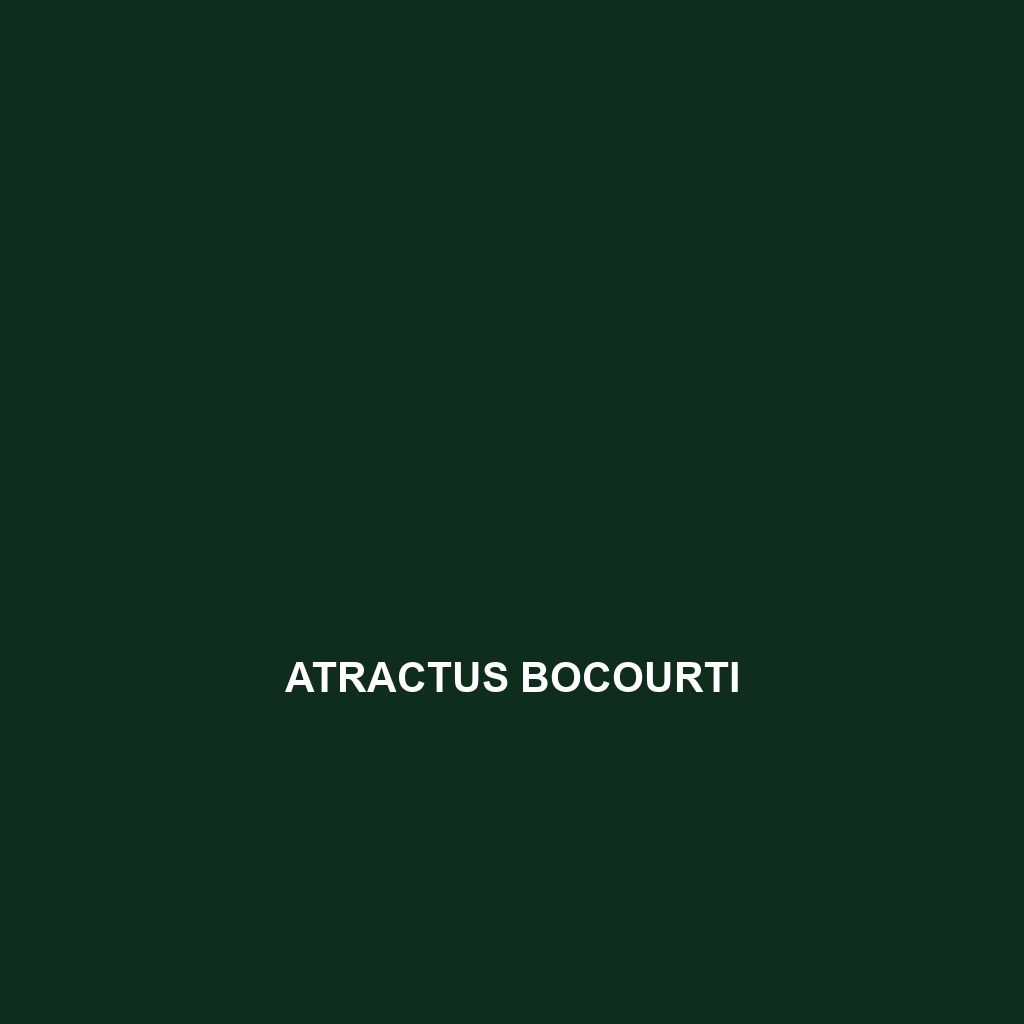Atractus bocourti: Species Description
Common Name: Atractus bocourti
Scientific Name: Atractus bocourti
Habitat
Atractus bocourti is primarily found in the tropical rainforests of Central America, particularly in countries like Panama and Colombia. These snakes inhabit moist lowland forests and are often associated with humid environments, where they can be found in leaf litter and under logs. The species thrives in areas with plentiful vegetation, as it provides cover and hunting opportunities in their natural habitat.
Physical Characteristics
Atractus bocourti is a relatively small, slender snake, typically measuring between 30 to 60 cm in length. Its coloration ranges from dark brown to black, often adorned with lighter bands or spots that contribute to its cryptic appearance. The smooth scales and elongated body allow it to navigate through dense underbrush with ease. This species has a distinctively unpatterned belly, which is a key characteristic for identification.
Behavior
Atractus bocourti is known for its secretive and reclusive nature. During the day, this snake tends to remain hidden, becoming more active at night when it hunts for prey. Its behavior often includes burrowing in leaf litter and foraging among decomposing plant matter. The species is also proficient at using its environment for camouflage, making it less detectable to predators and cohesive to its hunting strategies.
Diet
The diet of Atractus bocourti primarily consists of small invertebrates, such as earthworms, slugs, and insects. It employs a method of sit-and-wait predation, relying on its camouflage to ambush unsuspecting prey. This feeding strategy allows it to efficiently consume a variety of food sources that are abundant in its rainforest habitat.
Reproduction
Atractus bocourti exhibits oviparous reproductive habits, laying clutches of eggs during the wet season, typically between April and June. Female snakes may lay anywhere from 5 to 15 eggs at a time, which incubate for about two months before hatching. The young are approximately 15 to 20 cm long at birth, exhibiting the same coloration and patterns as adults as they begin their independent lives.
Conservation Status
Currently, Atractus bocourti is listed as vulnerable by the International Union for Conservation of Nature (IUCN) due to habitat loss from deforestation and agricultural expansion. Efforts are being made to study and conserve this species within its native range, emphasizing the need for habitat protection to prevent its decline.
Interesting Facts
– Atractus bocourti is named after the famous French naturalist Marie Jules César Lelorgne de Savigny, who contributed significantly to the study of reptiles.
– This species plays a crucial role in controlling insect populations within its ecosystem, highlighting its ecological importance.
Role in Ecosystem
As a predator of small invertebrates, Atractus bocourti plays a key role in maintaining the balance of its ecosystem. By keeping insect and other small population levels in check, it contributes to the overall health of its habitat. Additionally, this species serves as prey for larger predators, establishing it as an integral part of the food web in rainforest environments.
